Scholarships are a solid way to pay for your MBA stateside.
There’s a misconception that MBA scholarships are hard to find because there are fewer MBA scholarships than undergraduate scholarships.
However, the truth is, there are still over 100,000 MBA scholarships available in the US every year!
Myths like, “MBA scholarships are hard to come by” can deter you from applying to your dream schools.
Well, here’s the good news, you’re more eligible for a scholarship than you’ve been led to believe.
Now let’s bust some myths about MBA scholarships to show you exactly how eligible you are.
False! You can get a full scholarship if your pre-MBA accomplishments are exceptional.
This also means starting your admission prep from 1-2 years in advance.
A very effective way of getting a nearly 100% scholarship is an above-average GMAT score.
For instance, a GMAT score higher than 730 makes you eligible for the Stanford Knight-Hennessy Scholars Program.
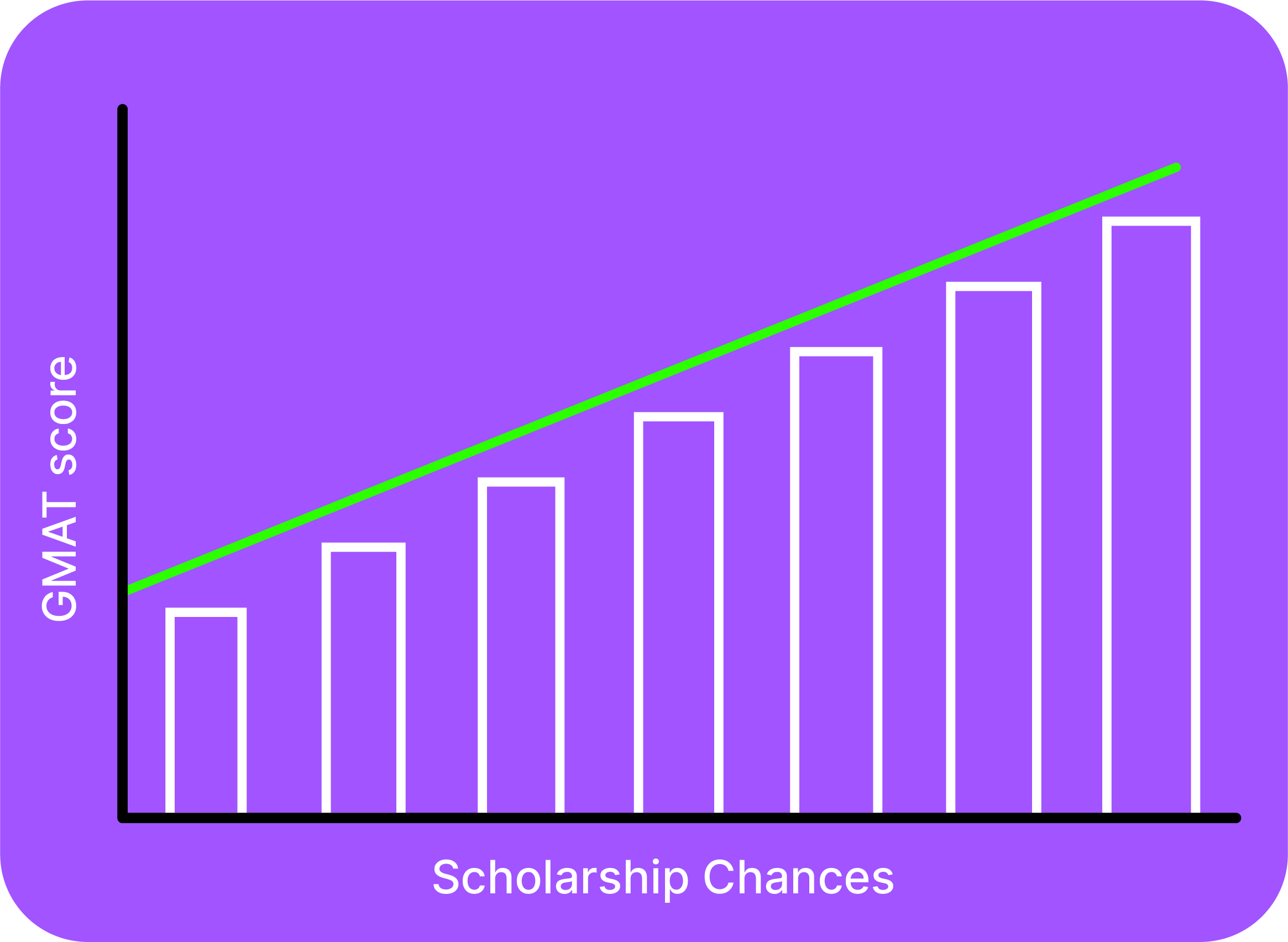
Which covers more than just the tuition fee.
You’ll receive a stipend for your living expenses, textbooks, laptops, and sometimes overseas tours.
Though academic merit is the most likely path to a full-ride scholarship, it isn’t the only deciding factor.
Your chances of getting a full-ride internship skyrocket when B-Schools witness a fall in applicants.
For example, due to a reduced number of applicants from 2017 to 2020, there was a 10% increase in the amount of money provided to MBA scholarships annually.
False! A 4.0 GPA is not a mandate.
If you have a 3.0 GPA and a good GMAT score, you’re already eligible for a scholarship in most universities.
In fact, in 2021, Dartmouth Tuck accepted a minimum of 2.6 GPA, Chicago Booth a minimum of 2.7, and Northwestern Kellogg a minimum of 2.4 for scholarship applicants!
So, even if you have a lower GPA, you aren’t out of the running for a scholarship.
Also, a lot of schools award scholarships for more than just academics.
For instance, the Fulbright program provides financial needs to at least 8000 professionals every year.
In fact, recently elected UK Prime Minister, Rishi Sunak, was granted a Fulbright scholarship for an MBA at Stanford.

This myth is both true and false!
It’s true because having an above-average GMAT is the only way you’ll get a scholarship at the Ivy Leagues and other top-end universities.
For example, if you want to discount your tuition at Harvard Business school, you need at least 730.
But the myth is also false because if you have a lower GMAT score of say 570-580, you can still get into popular schools like the University of South Florida or George Washington University.

In fact, according to GMAC, the average GMAT score is 547 for a scholarship!
A good score is anything more than the average GMAT score of the applicants at your target university.
You can look up any university’s average GMAT score on its website.
Here is a list of a few top universities and their average GMAT scores –
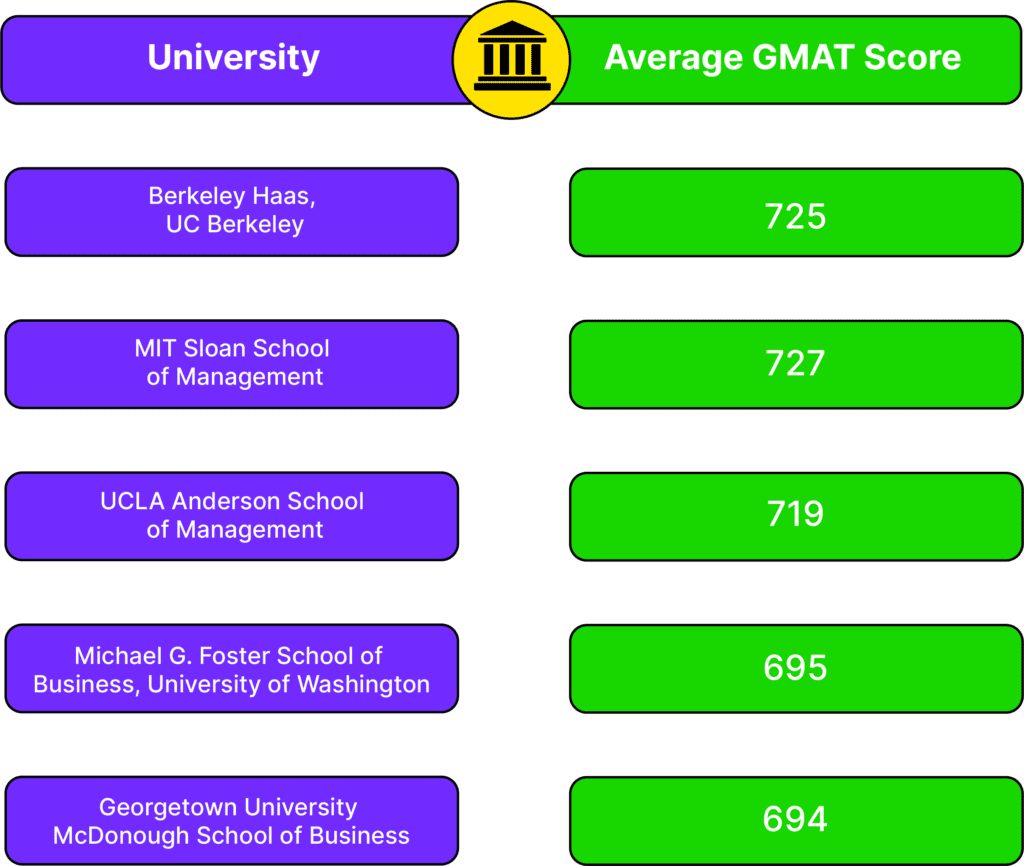


This is also both true and false!
An MBA scholarship is difficult to get if you’re applying to an Ivy League school, but it’s relatively easier if it is a non-Ivy League university.
Getting a scholarship heavily relies on your university list.
Your list needs to consist of some practical and safe schools.
Let’s say you don’t end up getting a scholarship in your most-desired university, you need to have some solid “backup options”.
Back-up options will usually be schools that:
· Require lower than a 3.0 GPA.
· GMAT score of 570-580.
· Little to no work experience.
That said, colleges aren’t the only way to pay off your tuition fee.
Some big-name organizations like McKinsey, Deloitte, Bank of America, etc. hire a large number of MBA graduates and also offer to pay off their student loans.

False! All B-Schools in the US give out scholarships to international students.
Each university gives out at least 3-4 MBA scholarships.
You can go onto their college websites to cross-check this.
By offering these scholarships, the universities aren’t doing you a favor.
Their MBA ranking is highly dependent on the salaries of its alumni.
So, if you’re someone with solid work experience and a unique profile, chances are that you’ll land a high-paying job after your MBA!
To ensure they don’t miss out on a candidate like you, any US college will happily give you a scholarship.
False! You don’t NEED extensive work experience to get a scholarship.
Most scholarships from B-Schools accept students with 2-3 years of work experience.
While it doesn’t hurt to have extensive work experience, the criteria for MBA scholarships are:
• Academic achievements such as GMAT test scores and undergrad GPA
• Exclusive personal qualities
• Essays
• Leadership Skills
Furthermore, extensive work experience may even hinder your chances of getting a scholarship, depending on your salary.
If you’re making upwards of $50- 60k a year for years on end, the interviewers will deduce that you already have enough money to fund your education.
That said, 2-3 years of work experience is not extensive, and also increases your chances of getting a scholarship.
Finally, here are some scholarships you can get at top-end universities without any work experience at all!


False! Most high-income applicants will qualify as low-income in the US.
So, you can get a scholarship even if you’re not a “low-income” student from India.
A 2-year program costs anything between INR 50,00,000-1,00,00,000 for the best universities, so most prospective students will qualify for a scholarship.

Unless you’re earning upwards of $100k a year with a substantial amount of savings, the university is not going to discriminate.
Even if you earn more than the average scholarship applicant.
Plus, you can also apply for merit-based scholarships if you think you’re too well off for a need-based scholarship.
A merit-based scholarship will require you to meet the minimum GPA, GMAT, and TOEFL score, as well as, any unique requirements for the scholarship.

False! Every B-School in the US funds scholarship applicants GENEROUSLY.
There are at least 500+ MBA universities in the US and only 7-8 of them are Ivy leagues.
Every one of these 500 universities has countless scholarships to offer.
If you don’t get into Stanford or an Ivy League, don’t worry!
There are around 288 Publicly funded B-Schools in the US.
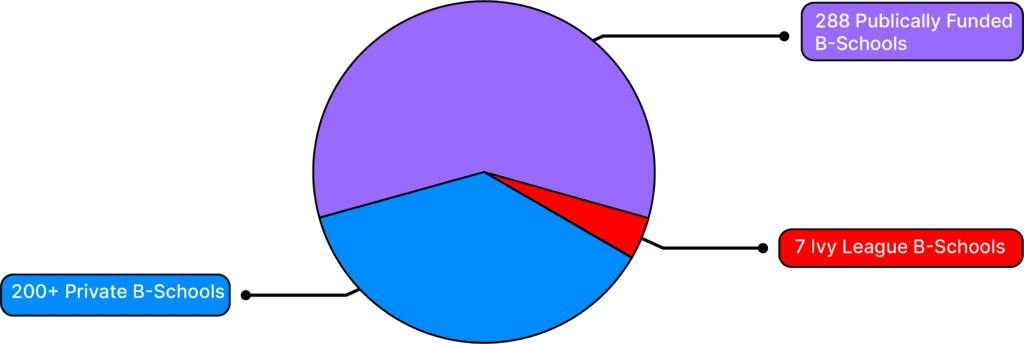
These B-Schools are less expensive anyway and still offer great scholarships and brand value.
There are universities like Kelley School of Business and Georgetown University which are non-Ivy League universities.
They are willing to discount tuition for goal-oriented applicants who are looking to land high-paying jobs at investment banks and corporate businesses!

False! There’s no defined age limit for you to apply for an MBA scholarship.
BUT if you’re an older applicant who is financially stable, your chances of bagging a scholarship are less than a young, broke, kid.
That said, some B-Schools also expect you to spend a minimum of 15 years in education.
That’s why most students at Harvard School of Business are 26-27!
As long as you’re under 30 though, your chances of getting a scholarship are still pretty solid.
And if you’re over 30, don’t worry, you should still be able to get a need or merit-based scholarship somewhere.
Especially if you have great work experience to show.
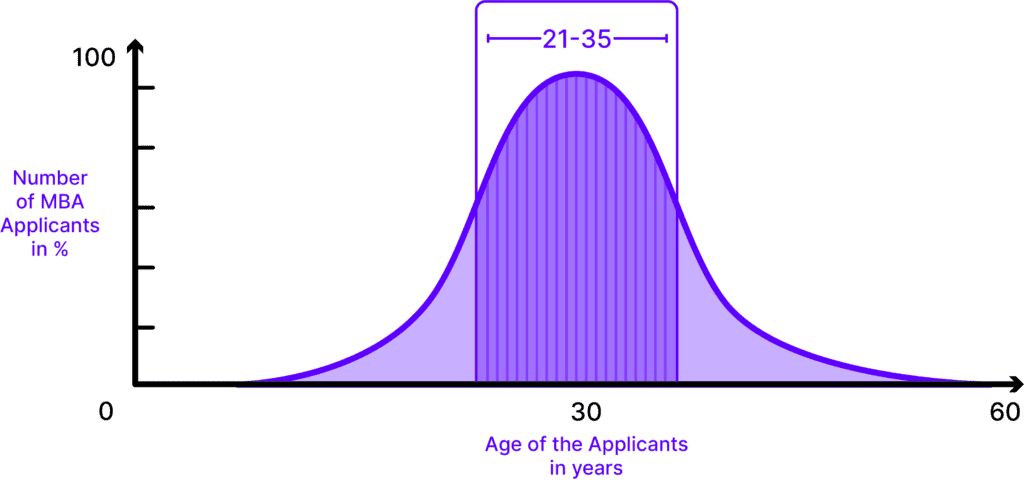

False! There are four types of MBA scholarships that an international student can get.
Merit and need-based scholarships are just the most common ones. Here is a quick run-down of the 4 different types of scholarships.
• Merit-based scholarships – If you have an outstanding GPA and an above-average GMAT score, this is the scholarship for you.
For example, the William R. Berkley Scholarship under NYU Stern covers full two-year tuition fees.
Along with, a $10,000/year stipend for books AND an $18,000/year stipend for housing!
• Need-based scholarships – If you’re a low-income student, you can get a need-based scholarship.
For instance, Horace W. Goldsmith Fellowship is a need-based scholarship at the Harvard Business School.
It awards 10 students with $10,000 towards their MBA.
If you’re in great financial need, you can also request multiple need-based scholarships.
• Diversity and Gender-based Scholarships – These represent the minorities in a university.
ROMBA LGBTQ+ MBA Fellowship and Forté MBA Fellowships for Women are
examples of diversity scholarships.
• External Scholarships are scholarships provided by NGOs.
You can directly reach out to them for MBA scholarships instead of applying through the college.
The North South Foundation and Tata Trust are examples of NGOs that provide direct external scholarships.
However, these scholarships are very hard to land.
Merit-based or need-based scholarships are almost always a better bet.
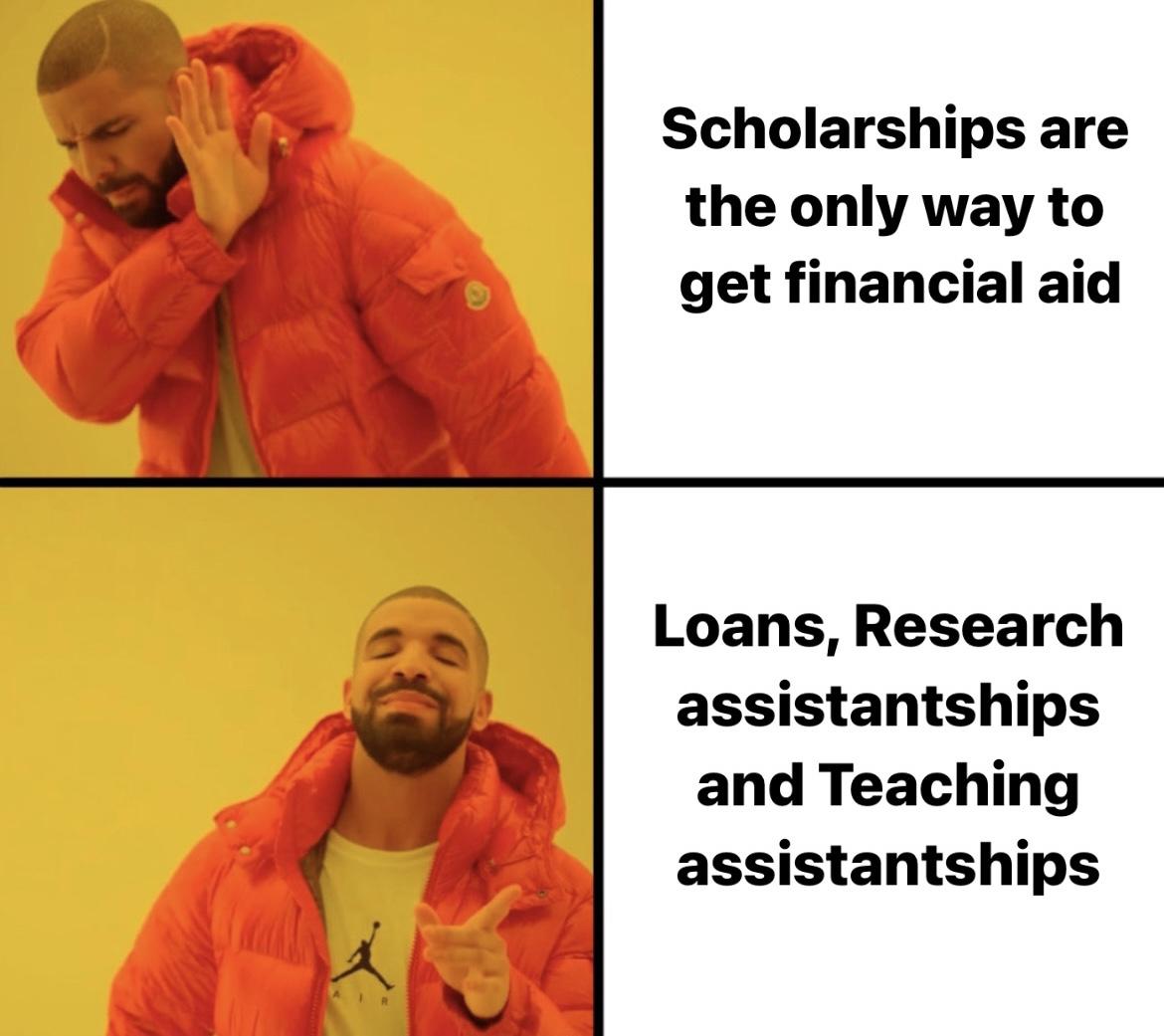
False! If you find yourself unable to bag an MBA scholarship, it’s not the end of the world for you.
Apart from loans, an assistantship is a solid way to get financial help.
There are two kinds of assistantships – Research and Teaching assistants.
If you’re a research assistant, you’ll be a part of a research project.
This means assisting faculty members in the work process.
And as part of a teaching assistantship, you’ll assist a professor in academic work.
For example, grading undergrad assignments.
Although this won’t pay for your entire tuition fee, you’ll receive a monthly salary in most cases.
Your salary can be anywhere between $26,683 and $36,847.
Cleveland State University, the University of South Florida, the University of Arkansas, and many other universities in the U.S. offer assistantships for international students.
Now to contrast the myths, here are some truths about MBA scholarships in the US –

True! Applying early definitely escalates your chances of getting an MBA scholarship.
This is because the entire financial aid of a university is up for grabs in Round 1.
And as the rounds proceed, this fund pool diminishes and gets more selective.
There are instances when applicants have gotten a $250,000 scholarship in Round 1.
The first round of applications usually takes place in September.
For international students, even the admissions acceptance rate of Round 1 is higher than the rest.
The admission committee notices your first preferences and keen interest.
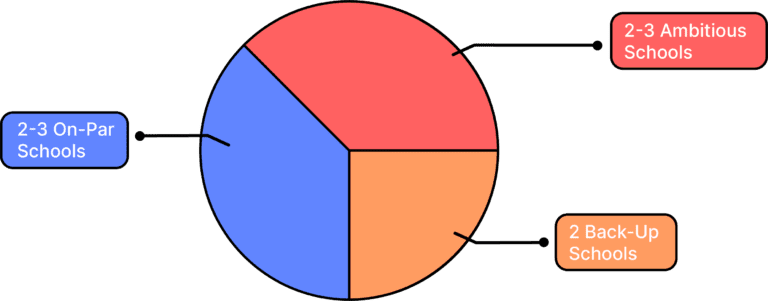

If you’re looking for a surefire way to climb the corporate ladder, an MBA in the US is definitely worth it.
The U.S. is home to some of the largest global corporations.
In fact, MBA graduates working at US companies earn an annual salary of INR 94,00,000 on average.
On the other hand, non-MBA holders earn around INR 62,00,000.
Moreover, having an MBA degree from the US is perfect for your resume.
Almost 90% of US headhunters expect to hire MBA graduates.
If you want to snag a job as a CFO, investment banker, or financial advisor in the US, your ROI from an MBA will be priceless.
Also, if you aim to start a new business, a US-based B-School will set you up with the right network, knowledge, and skills.

An admission counselor can help you realistically achieve a scholarship by:
• Narrowing down your list to schools that will optimize your chances of getting a scholarship
• Conducting mock interviews that prepare you for scholarship interview
• Helping you deliver your scholarship essay with coherence and persuasive writing.
• Helping you curate your personal brand to tell your unique story through your scholarship application.
They’ll also help you explore your own self-awareness to understand why you’re worth a scholarship.
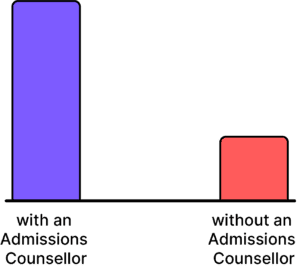
In a nutshell, the main advantage to working with a counselor is that they will help you put across your post-MBA aspirations in your application in a way that stands out to the reviewer and persuades them to offer you a scholarship.